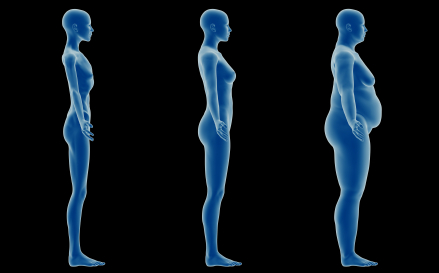 Yesterday, my BBFF Amy Zimmerman wrote a shocking piece about a trend among young brides to achieve rapid weight loss via feeding tubes. In it, Amy cites statistics from the The National Association of Anorexia Nervosa and Associated Disorders, Inc. about anorexia and other eating disorders, focusing solely on adolescents and young girls. And while it is indeed true that the majority of eating disorders arise at an early age, there is an entire group that is slipping under the radar: older women.
Yesterday, my BBFF Amy Zimmerman wrote a shocking piece about a trend among young brides to achieve rapid weight loss via feeding tubes. In it, Amy cites statistics from the The National Association of Anorexia Nervosa and Associated Disorders, Inc. about anorexia and other eating disorders, focusing solely on adolescents and young girls. And while it is indeed true that the majority of eating disorders arise at an early age, there is an entire group that is slipping under the radar: older women.
Amy’s post spurred me to do a bit of research and I was not at all pleased by what I learned (and did not learn). In fact, there are a dearth of data on eating disorders in women over the age of 40 and it appears that the problems are underdiagnosed and often unrecognized. Still, experts say that for some of these women, their problem is resurfacing as they age while for others, it is brought on by life events (e.g. death or divorce), menopause (and its related weight gain), empty nest syndrome and even illness. Self-esteem issues, the invisibility syndrome and the mirror all contribute as well.
A February 2012 Harvard Health Publication on the issue quoted Dr. Anne Becker, director of the Eating Disorders Clinical and Research Program at Massachusetts General Hospital as pointing out that society’s values on youth coupled with the incongruence between how women feel and their reflection in the mirror (e.g. “if you think that surface of your skin or contours of your body aren’t supposed to match your chronological age”) is partially to blame. This incongruent belief system can lead to negative body image or a precursor to eating problems where suddenly appearance, food and weight control take center stage. And anecdotal evidence suggests that these issues are starting to emerge in the clinical setting.
If you feel that you are from bulemia (binge and purge), anorexia (severe dietary/caloric restriction) or binge eating disorder (binge without the purge), there is help. Moreover, if you find that you are obsessing unnecessarily and regularly about your body image or weight or appearance, you may be headed down that path. Fortunately, even if the stats are not readily accessible, ample resources ares truly just a click away. The Academy for Eating Disorders features an eating disorder professional finder tool, which allows you to search by location and practice speciality for physical or mental assistance. The National Eating Disorders Association offers in-depth resources, information, support and education to individuals and families. ANDA (National Association of Anorexia Nervosa and Associated Disorders) also provides resources and links.
You may be under the impression that what you are feeling is a result of aging and societal pressure. Or believe that you overcame your issues at an earlier age and are better able to cope now (even though the signs are recognizable). Yet, just as these issues can soar in adolescents and young adult women, they can similarly do so in midlife. Seek assistance; you are worth it.







Actually, this age group – my peers – is one of the reasons I wrote that post. (thanks for the link love). I am frightened by what I am seeing. Women who have raised their kids and in the name of needing to find themselves are becoming lost.
When I read your post yesterday, it truly inspired me to look into this. And the information is not out there, at least not from a research standpoint. There seems to have been several articles written in the last year indicating that doctors are seeing more midagers with eating disorders but the numbers are sketchy. I am so glad that you wrote your post because it’s time to start bringing this issue out in the open among our age group. Knowledge is power!
More than 10 million Americans suffer from some form of an eating disorder, including anorexia, bulimia and binge eating, the National Eating Disorders Association reports. An increase of 42 percent of middle-aged women with eating disorders was seen from 2001 to 2010.